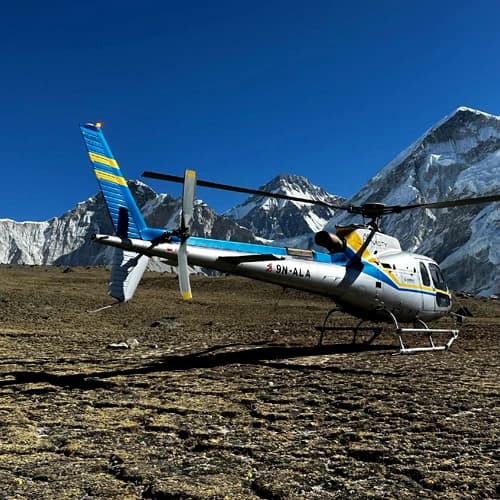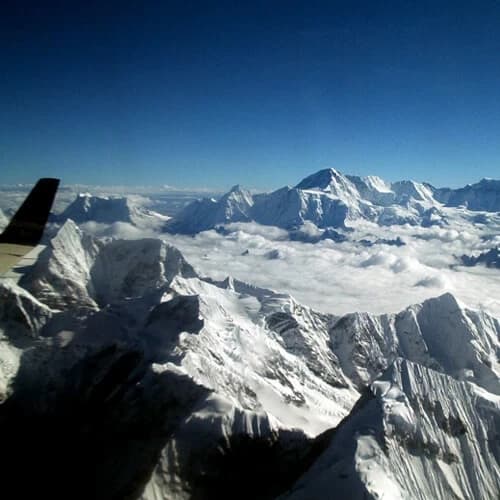Visa & Entry Requirements (For Nepal, India, Bhutan)
Starting our Nepal, Darjeeling, Sikkim, and Bhutan Tour means dealing with three immigration processes- not necessarily the easiest to manage but nothing to be scared about. For Nepal, most nationalities are granted a visa on arrival when entering through Tribhuvan International Airport or one of the other land border crossings. You'll need a passport valid for at least six months, a blank visa page, two passport photos, and approximately US$30 (for 15 days) or US$50 (for 30 days).
Similar requirements apply for India (covering Darjeeling and Sikkim), which necessitates an e-Tourist visa obtained before travel, along with a Restricted Area Permit (RAP) to enter Sikkim. We can easily arrange both of these through recognized local travel agents. For Bhutan, except for Indian nationals who require only a permit, all travelers must apply for an e-Visa through a licensed tour operator.
They must also pay a US$40 visa fee plus a daily Sustainable Development Fee of US$100 and obtain clearance in advance. We handle every application step, from uploading passport scans and photos to paying fees, so your travel documents arrive on time before departure. Just bring your passport (with at least 6 months' validity), and rest easy, we've got all borders covered.
Accommodation Standards During the Trip
For your Nepal, Darjeeling, Sikkim, and Bhutan tour, expect clean, comfortable accommodations that blend local character with essential modern comforts. You'll typically stay in government-approved 3-star hotels or well-maintained lodges, think cozy rooms with private bathrooms, reliable hot water, and Wi-Fi (though speeds vary in remote areas). In Darjeeling and Kalimpong, heritage properties and family-run hotels offer a unique blend of colonial charm, often accompanied by stunning views of the surrounding tea gardens.
Similarly, Sikkim (Gangtok/Pelling) features scenic resorts and mid-range hotels, some of which offer stunning mountain vistas, such as the Martam Village Resort near Rumtek Monastery. Bhutan's government regulates standards strictly, so you'll get authentic yet comfortable stays, think traditional decor with modern amenities. In Paro or Thimphu, hotels often feature cultural touches, such as wood-paneled rooms and mountain views; some even offer farmhouse experiences with hot-stone baths.
While not luxurious, these spots are chosen for their location and warmth, such as walking to Kangchenjunga views in Darjeeling or hearing monks chant near Punakha Dzong. It’s about resting well after immersive days, not just a place to sleep.
Taste Authentic and traditional flavors.
Traveling in Nepal, Darjeeling, Sikkim, and Bhutan is more than just exploring mountains and monasteries: it also offers a chance to experience some of South Asia's finest culinary traditions. In Nepal, for instance, a plate of dal bhat tarkari (lentils, rice, and seasonal vegetables) is a treat that transcends being a staple; it is truly comfort food.
You will also see steaming plates of momos (dumplings), a popular snack, served with tangy achaar (pickle) at every teahouse or restaurant. In Darjeeling, you will find an exceptional blend of Tibetan and Bengali cuisine. You can enjoy a warm bowl of thukpa or tea made from the first flush while taking in the views of the hills. In Sikkim, fermented foods such as gundruk, phagshapa (a pork stew), and millet-based dishes reflect both Himalayan and local tribal traditions.
On the other hand, Bhutanese cuisine surprises visitors with bold, earthy flavors, such as ema datshi, the national dish made with chilies and cheese, or suja, a savory butter tea that’s more savory than sweet. What connects all these places isn’t just geography, it’s the way food is prepared with heart, eaten slowly, and shared generously.
Best Time to Visit (Seasonal recommendations)
The best season for your Nepal, Darjeeling, Sikkim, and Bhutan adventure is autumn (mid-September, October, November). Think crisp, sunny days in the 15 - 20°C range, ideal for gazing at the Himalayas, such as the sunrise over Kangchenjunga from Tiger Hill or the iconic Tiger's Nest Monastery in Paro, all without the monsoon haze or the chill of winter.
This season offers clear skies, minimal rainfall, and vibrant festivals, such as Bhutan's Thimphu Tshechu. Similarly, Spring (March to May) is a close second, especially for nature lovers. Think rhododendron blooms in Sikkim's Yumthang Valley, lush tea gardens in Darjeeling, and comfortable trekking weather. While Bhutan's Paro Festival lights up in March, be prepared for more crowds and slightly higher costs in Darjeeling.
Avoid the heavy monsoon months (July–August) unless you prioritize emerald landscapes over mountain views, as landslides can disrupt travel in Darjeeling/Sikkim; however, Bhutan remains accessible. On the other hand, winter (December–February) offers solitude and snow-dusted peaks, but it also packs serious layers for sub-zero nights, especially in Bhutan's highlands or North Sikkim.
Local tip: For festivals or trekking, book 3–6 months in advance – permits (especially those in Bhutan) and hotels fill up quickly in peak seasons.
Cultural Etiquettes to Follow during the Tour
Respecting local traditions and values is key to your journey through the Eastern Himalayas. Here is a simple guide to help you travel respectfully and mindfully across Nepal, Darjeeling, Sikkim, and Bhutan:
- Dress Modestly: Cover your shoulders and your knees when visiting temples, monasteries, or dzongs. In Bhutan, traditional dress codes, such as “Driglam Namzha,” are still observed in official settings.
- Footwear Etiquette: Always remove your shoes before entering a religious site or a home.
- Mindful Movement: Walk clockwise around stupas, shrines, and prayer wheels—a sign of reverence in Buddhist culture.
- Greeting Locals: A soft “Namaste” in Nepal and India, or “Kuzuzangpo La” in Bhutan, with a slight bow, is warmly received.
- Photography Manners: Always ask permission before taking photos of people, especially monks or those inside temples.
- Dining Customs: Accept food or gifts with both hands, eat with your right hand when sharing meals, and wait for elders to begin.
- Public Behavior: Keep voices low in sacred or public areas. Public displays of affection are best avoided.
- Environmental Respect: In Bhutan, especially, carrying your trash and leaving no trace is a part of their culture.
- These small gestures go a long way—not only do they show respect, but they also deepen your experience by fostering authentic cultural connections.
Health & Safety Tips
When traveling in Nepal, Sikkim, Darjeeling, and Bhutan, a few simple health and safety measures go a long way.
- First, stay hydrated by drinking only bottled or purified water, especially in Nepal and Bhutan, where tap water is not reliably safe. If you want to avoid stomach issues, paying a little more for higher-quality water makes sense.
- Eat fresh, cooked meals, and avoid raw veggies or undercooked food in small eateries. For altitude, something you'll often feel, always ascend gradually. Try the “climb high, sleep low” approach and listen to your body.
- Caffeine and alcohol? They're diuretics, so skip them when adjusting, as they may exacerbate dehydration and altitude effects. Your guide will also regularly check oxygen levels using a pulse oximeter.
- Don’t forget to carry a basic first-aid kit, including altitude meds like acetazolamide (Diamox) if prescribed, and bring travel insurance with coverage for medical evacuation.
- Lastly, keep valuables secure, stay in touch with loved ones, and follow safety advice when crossing roads or rivers. A little awareness ensures your Himalayan adventure stays as magical as it is safe.
Why Choose Outfitter Nepal?
By selecting Outfitter Nepal for your Nepal, Darjeeling, Sikkim, and Bhutan tour, you are entrusting the control of your travels to capable professionals who know the Himalayas like the back of their hand. Founded in 2008, Outfitter Nepal Treks and Expedition is a government-registered company licensed by the Nepal Tourism Board (NTB) and affiliated with reputable associations, including but not limited to TAAN (Trekking Agencies' Association of Nepal), NMA (Nepal Mountaineering Association), and KEEP (Kathmandu Environmental Education Project). Our mission has always been to provide authentic travel experiences that are both safe and sustainable, deeply connecting travelers with the culture, people, and raw beauty that the Himalayas have to offer. Outfitter Nepal boasts a perfect safety record, local, hand-picked guides, and a deep sense of respect for travelers and the local people they encounter on their adventures. With over a decade of reliable service, Outfitter Nepal understands the importance of building trust.




